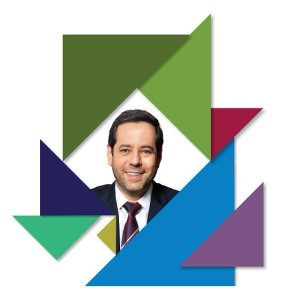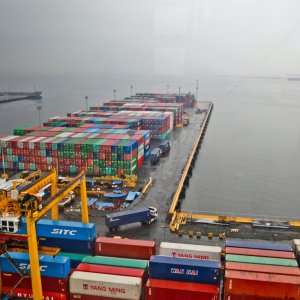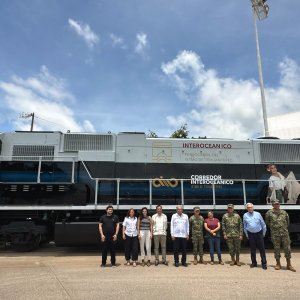New Drugs Require New Transport Methods

STORY INLINE POST
Q: How many of your competitors engage in similar services to NTA’s new medicine delivery, medical and laboratory equipment services and materials for clinical research and what impact has this transition had on the company’s profitability?
A: NTA is a logistics company specializing in the health industry, including clinical research and everything that it entails. We have structured our distribution scheme in such a way that specialized infrastructure and machinery was needed. We also developed a distribution network that could easily help us reach our clients as our drop-off points are hospitals, clinics and research centers. We do not only deliver manufactured products but also clinical analysis and biological samples. The latter represents the most intricate part of our operations as it can refer to organs requiring quick delivery times and adequate temperature, humidity and handling control.
We continue to lead the way in specialization services and the number and size of our clients is the best indicator of this as we now service multinational giants like Johnson & Johnson and Fisher Clinical. Not everyone can offer comparable services, which include warehousing, portfolio control and distribution services, as well as terrestrial and aerial delivery supervision. OTCs are the only product we do not deliver as distribution volumes are high and do not fit our business model.
Q: Considering OTC products represent a significant proportion of the pharmaceutical industry, why did NTA decide to exclude them from its operations?
A: In today’s world, groundbreaking laboratories are focusing on biotechnological specialty drugs in line with health trends. The volumes of these products coupled with the desire of businesses to keep inventory numbers low have given way to our services. Maintaining a balance between low distribution units and low inventory numbers is tricky. However, the price of specialty products keeps economic performance up. Nonetheless, to ensure healthy profits, precise and timely distribution is of the essence. We must also take the packaging and transportation temperature levels into consideration, which must be set at 2-8°C. If this is not accounted for, we cannot ensure the integrity and efficiency of molecule components.
Q: According to NTA, what are the new market tendencies of the pharmaceutical industry?
A: For years, big pharmaceutical laboratories have either merged or acquired other laboratories to expand their portfolio. Others however, are specializing from within by creating specialty drug divisions. Chronic diseases such as diabetes and cancer have become a pandemic problem around the world and therefore major pharmaceutical companies have turned their attention to them. In the past, companies would strategize their sales by season, developing gastroenterology solutions for the summer and respiratory drugs for winter. This is no longer true with chronic diseases. Suppliers are now expected to deliver to hospitals and clinical sites as well as private homes and offices.
Q: How have these transitions affected Mexico’s regulatory framework?
A: It has influenced the distribution channel of the pharmaceutical industry. Previously, through the NOM-059 COFEPRIS only regulated drug integrity with manufacturers and healthcare sites without watching over the distribution phase. COFEPRIS now demands that laboratories oversee service providers’ compliance, ensuring product integrity throughout the supply chain. As a result, from 2017 onward all distribution units must be equipped with temperature control mechanisms. Since our creation in 2000, regulations have evolved on a yearly basis. We have seen the way the market has evolved, where laboratories merged with each other, growing their production and distribution volumes. In return, NTA has learned how to become flexible in the way it works. In the past, we only reacted. As of today, we can foresee what will happen further along the line.
Q: Last year, you were the only company with SMTC 01 certification (service, handling, transportation and custody certification). How does this differentiate your services from others?
A: The SMTC 01 is a security certification implemented to service pharmaceutical companies. As the only company in Mexico that has secured it NTA can guarantee products will arrive safely. The certification covers the new subsections the NOM-059 is aimed at tightening. Our clients' patrimony is at stake during the distribution process, and the SMTC 01 reflects our ability to keep dangers to a bare minimum including damaged, lost or stolen goods. By complying in terms of safety we achieve the quality of service expected by our clients. With the enforcement of the NOM-059 sub regulations, companies will have to catch up. Even though we will see more competition from an expertise standpoint, we remain the first. There is a five-year history behind our accreditation, which has allowed us to further understand what our clients want and the challenges they need to overcome. As such, NTA continues to understand the market’s needs and evolve its capabilities. In addition, some small distribution companies with insufficient financial capital will not be able to comply with new temperature requirements.
Q: In which ways does NTA ensure innovative means of transport and quick responses?
A: NTA has an in-house auditing program that takes place twice a year, overviewing every affair of the company. This includes transportation, security, quality and delivery time, among others. Exterior audit programs are also put in place by our clients, which can happen at any given time. Through both, NTA systemically improves any deficiencies and tightens its strongholds. Finally, we are measured and graded by Good Manufacturing Practices (GMP), which controls quality practices of the pharmaceutical industry and by the Mexican Society of Standardization and Certification (NORMEX) that evaluates both safety and quality. As such, our results speak for themselves, securing between 96 percent and 98 percent compliance. If we expect to service the health industry we must run parallel with what authorities expect of laboratories.























